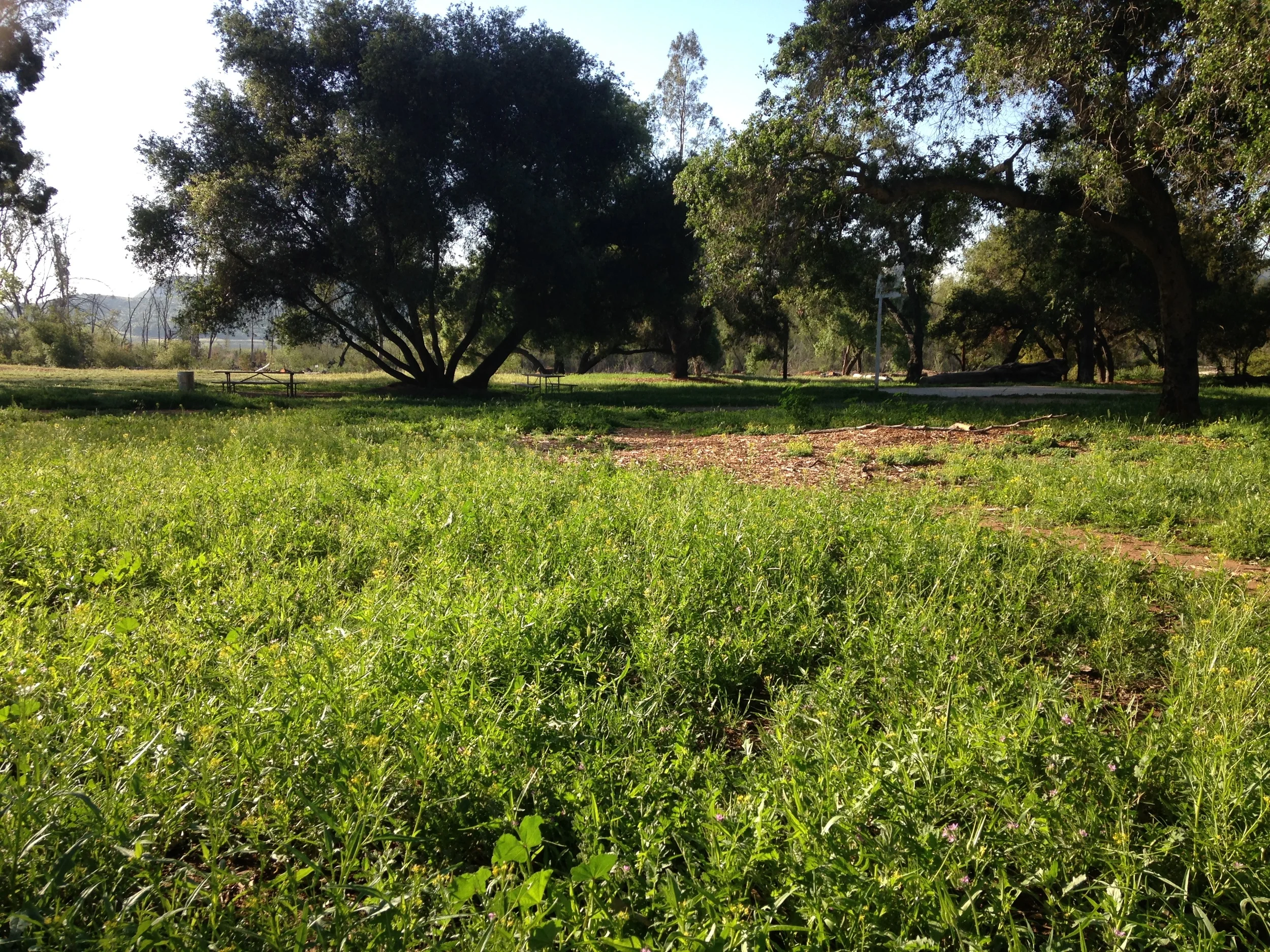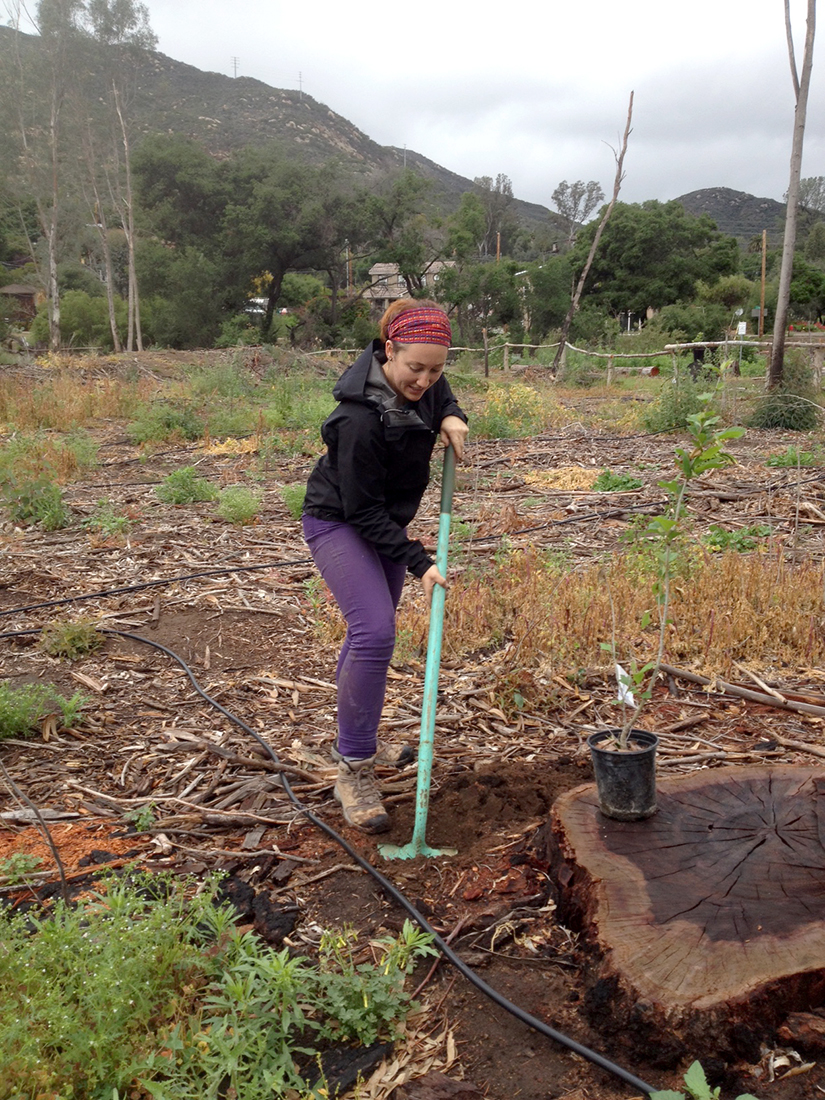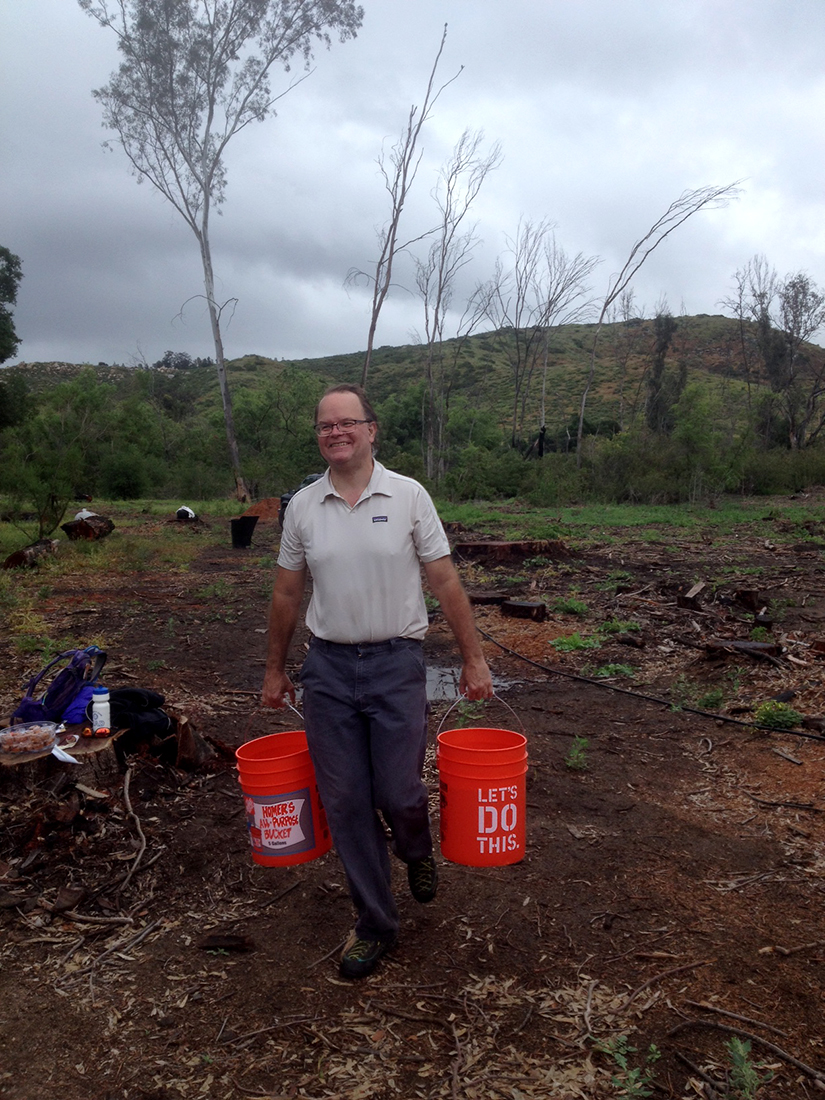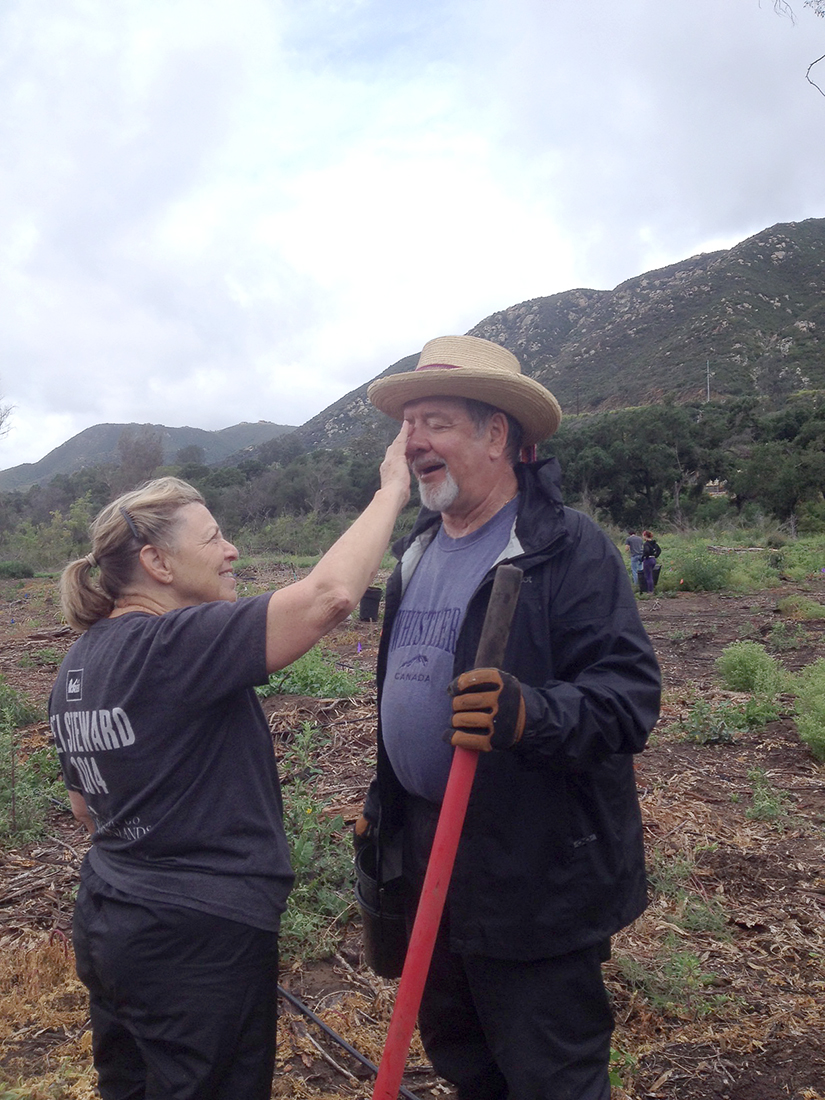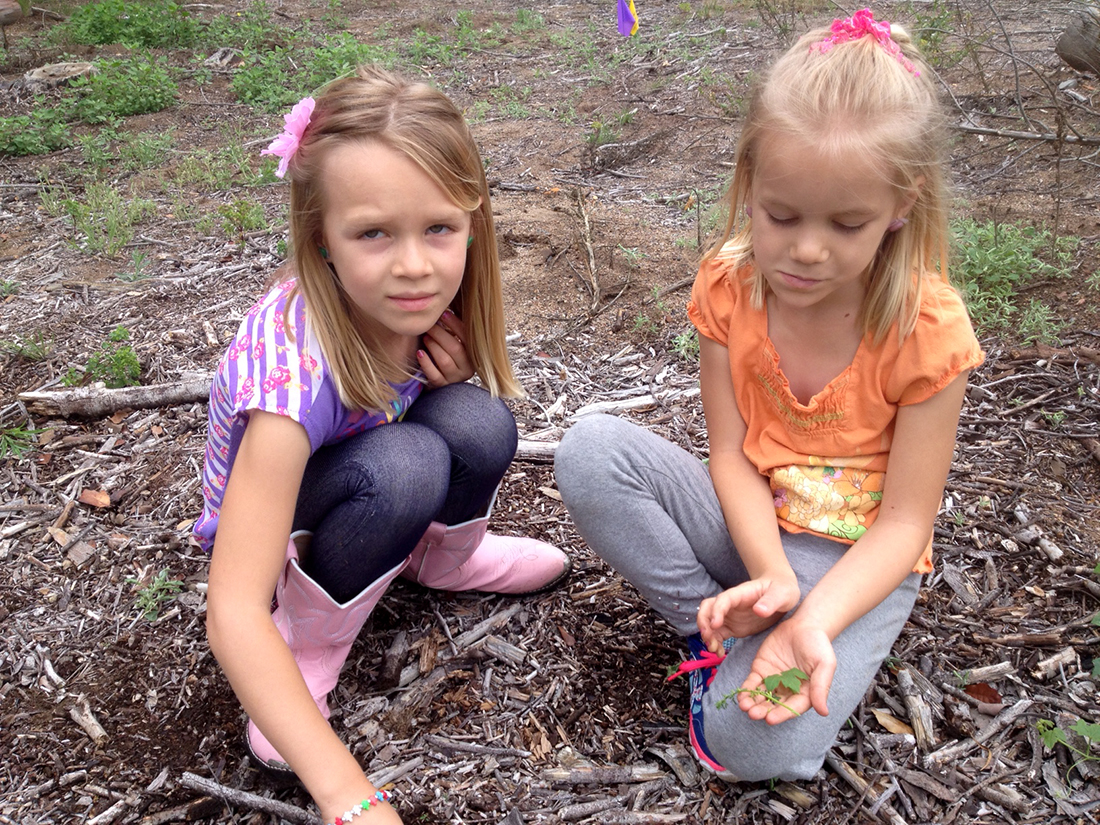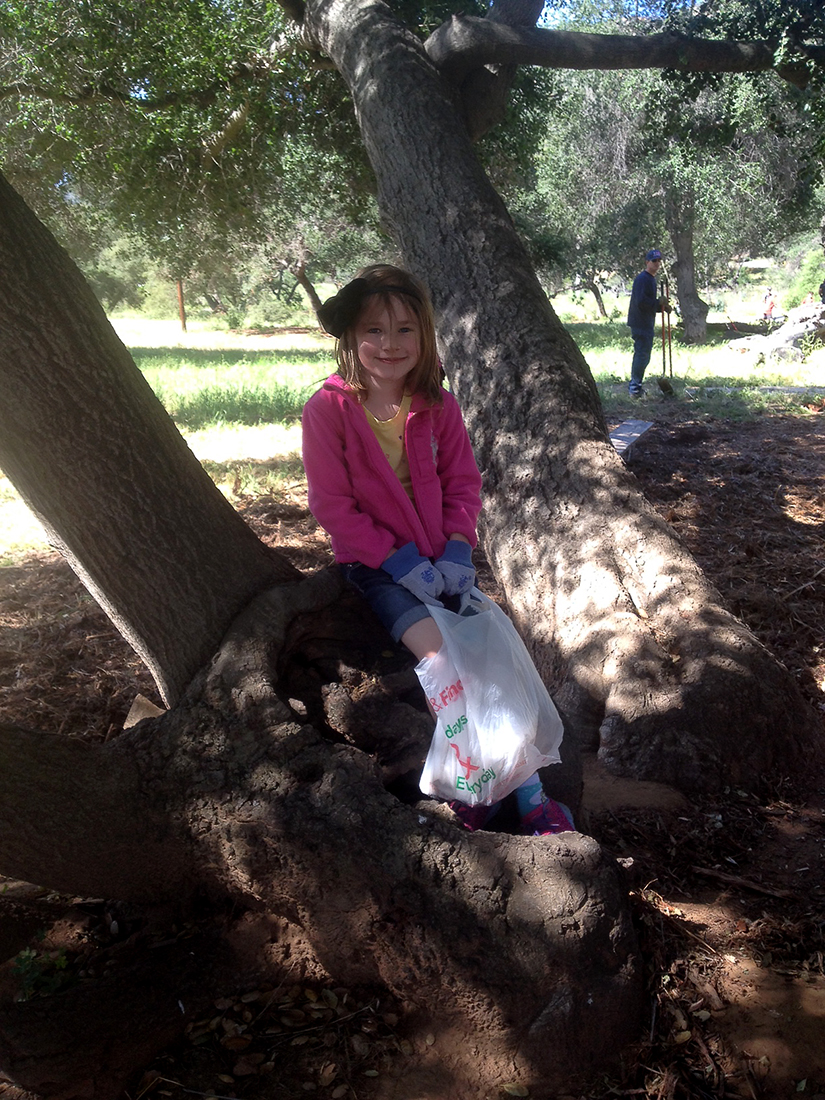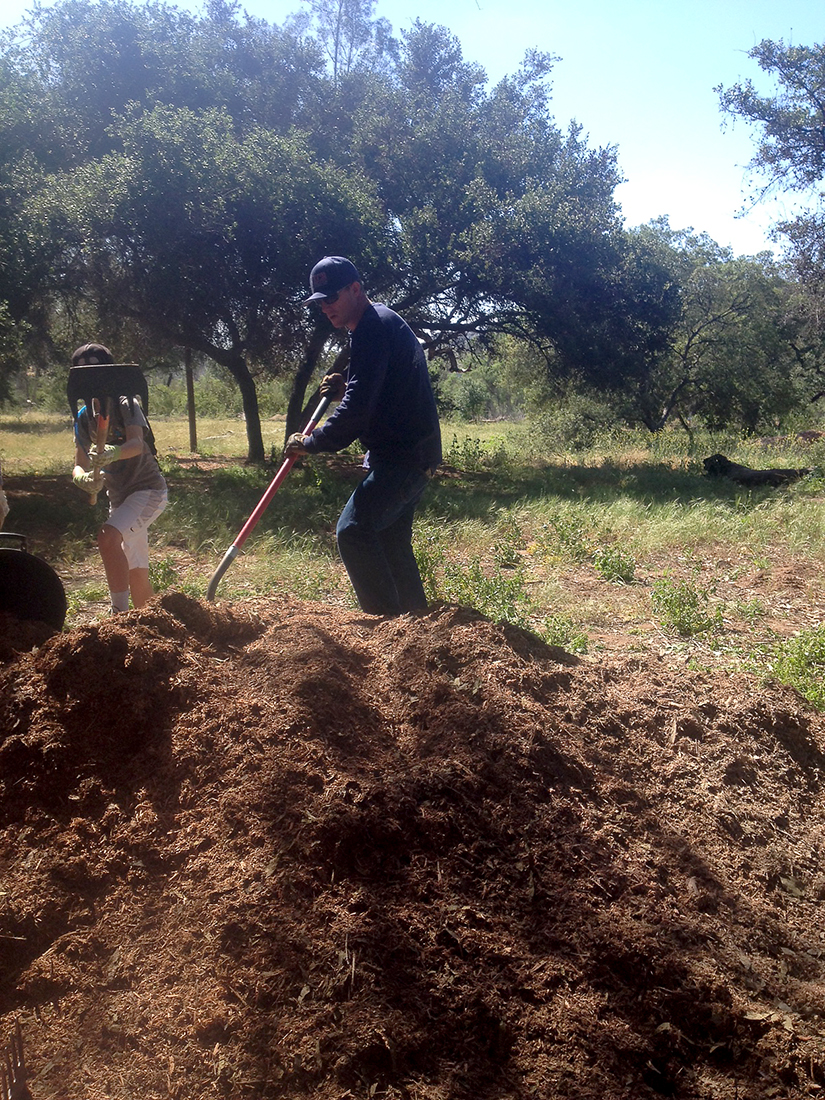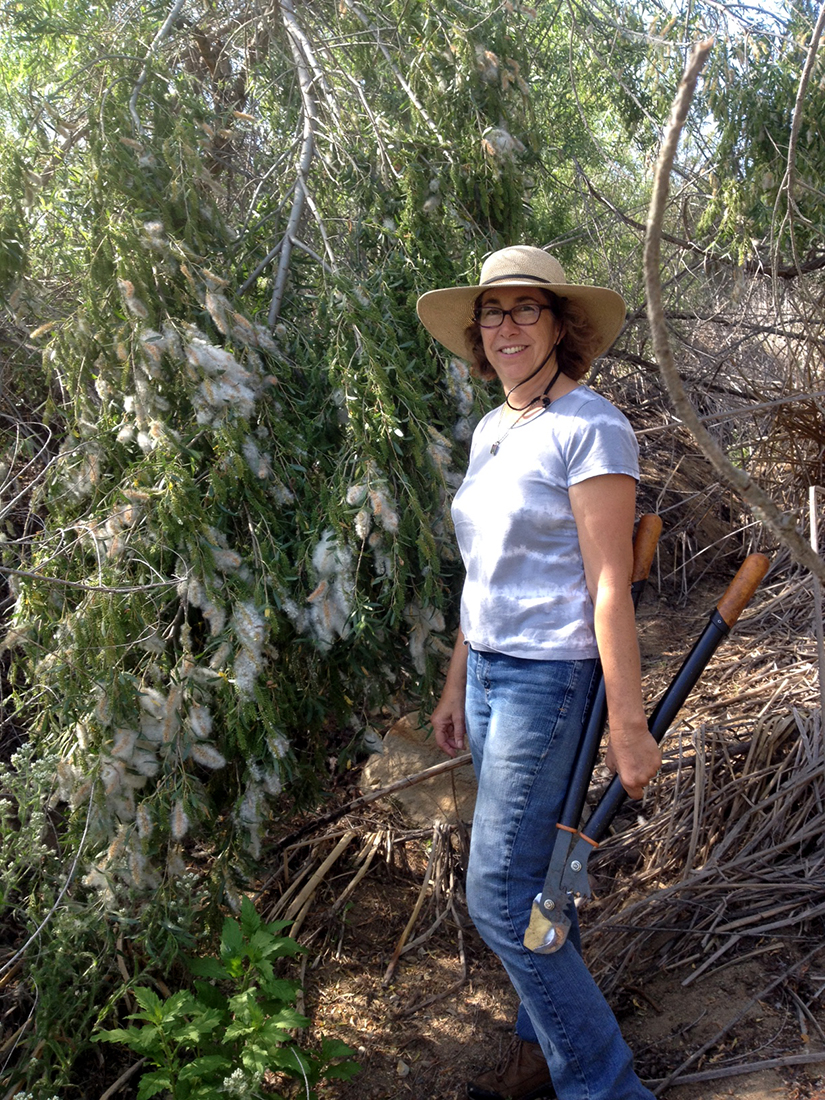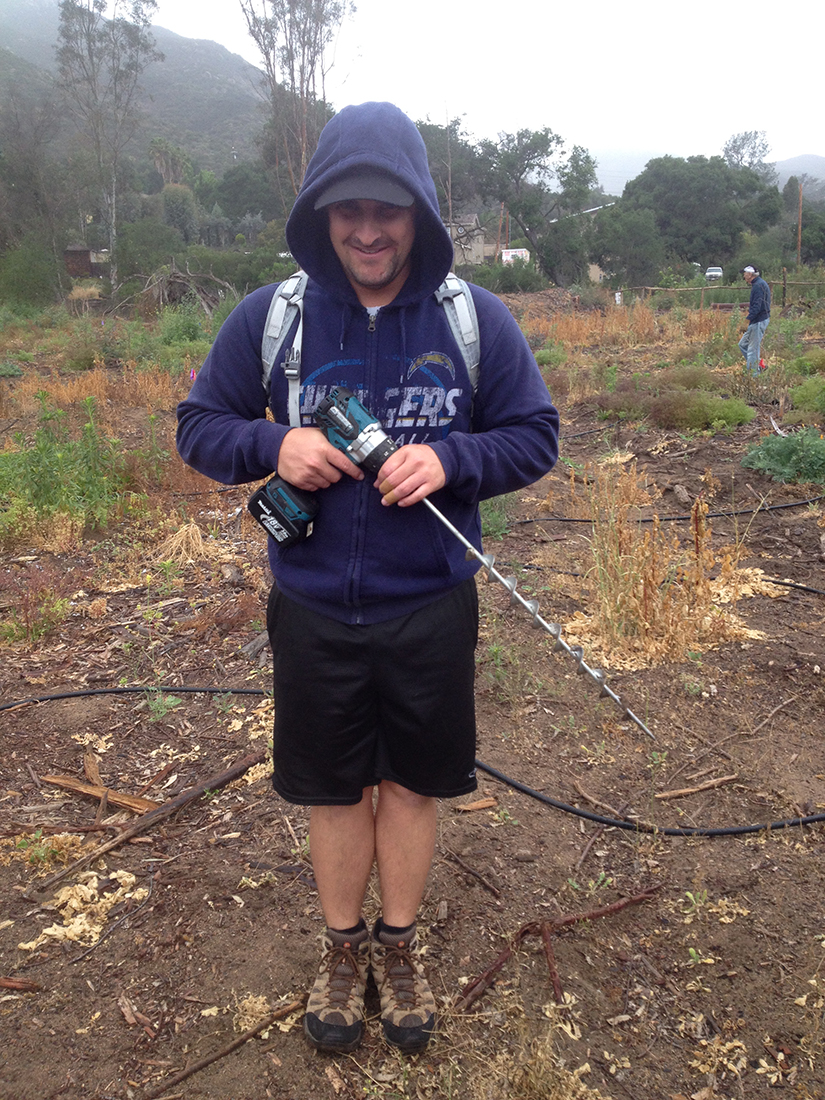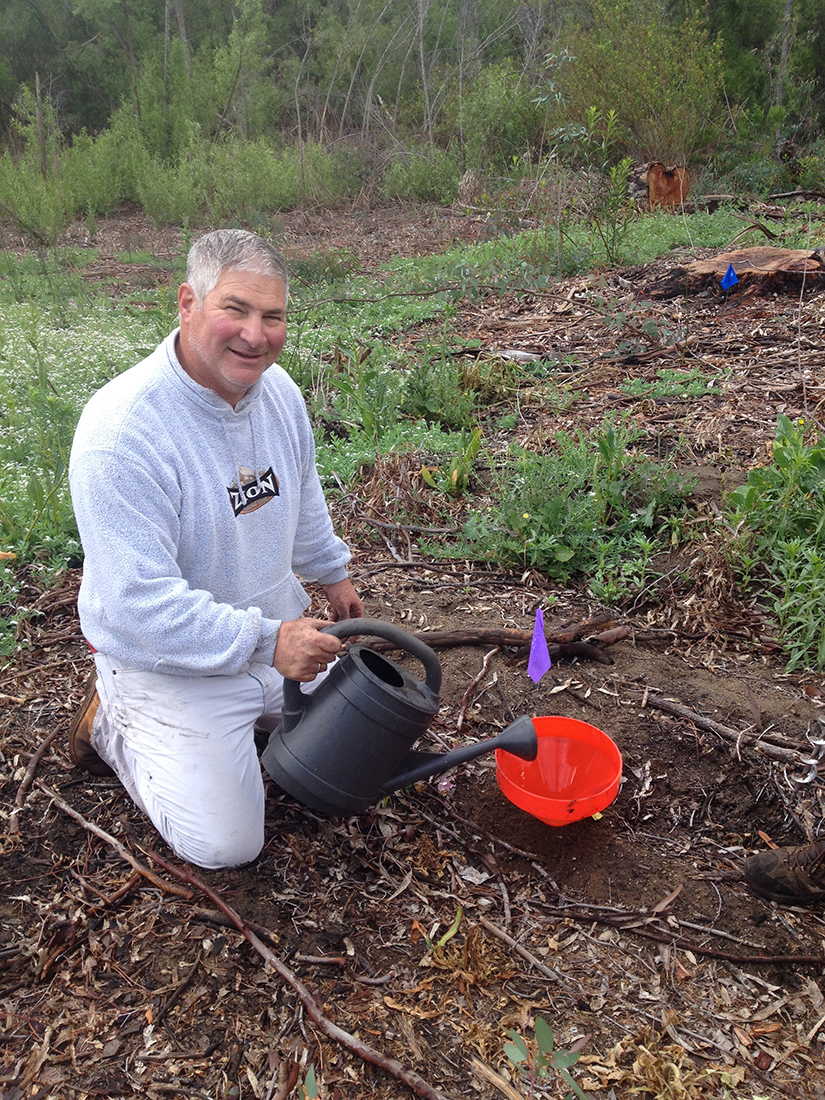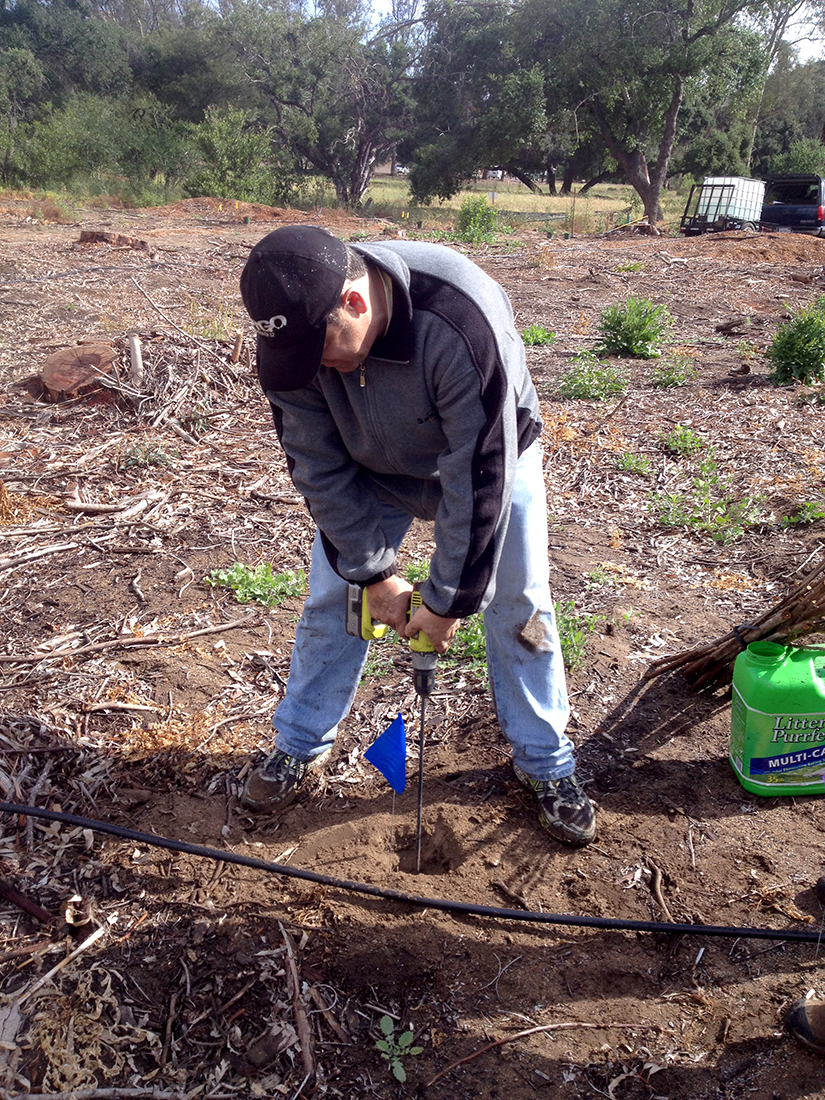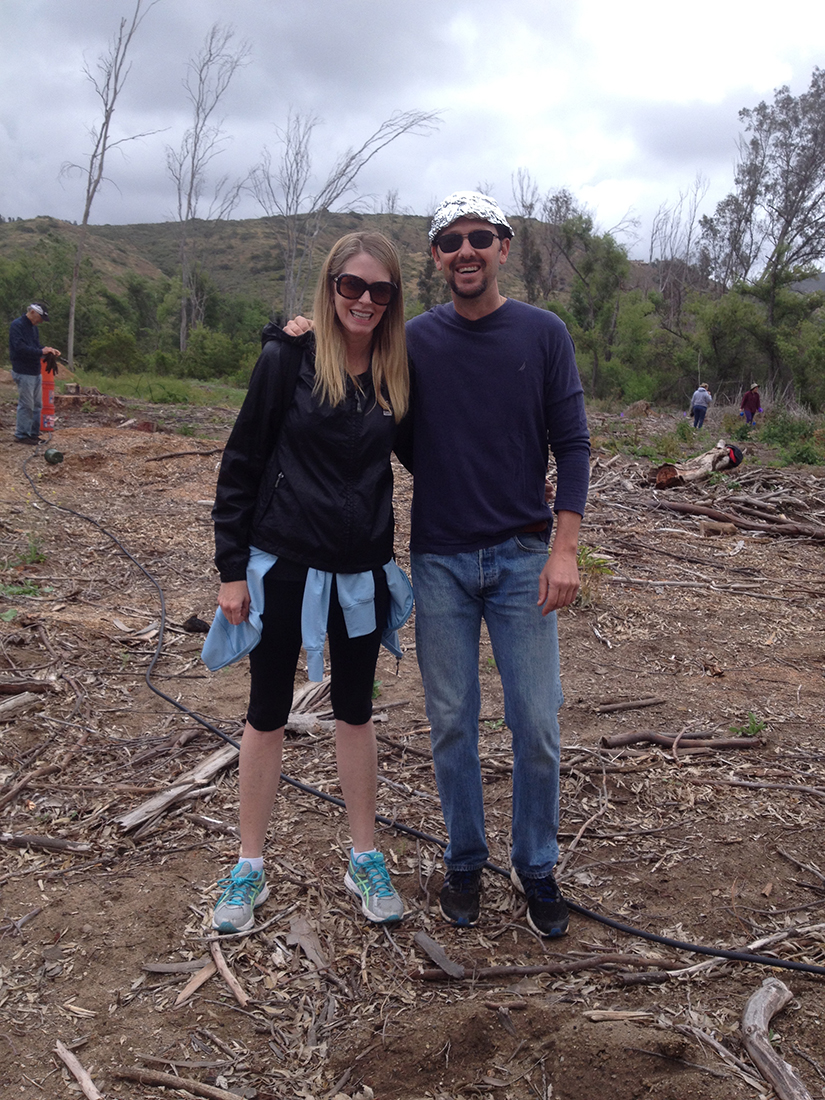Working on the removal of tamarisk, eucalyptus, pampas grass and other noxious weeds in the“bathtub ring” of the Lake with the new lower water level. The addition of acres of willows around seasonal watercourses to create high quality Southwestern Willow Flycatcher habitat.
Land cleared of eucalyptus is now growing oaks, willow and sycamores. Dozens of native species have volunteered from the existing seed banks and are being nurtured and the floral display is exceptional. We are planting the more natives and removing the rain generated weeds. Most of the restoration area west of Del Dios Park is now planted, with both pole and potted plants. We are watering our native plantings, so the public staying out of the areas keeps the damage to a minimum.


